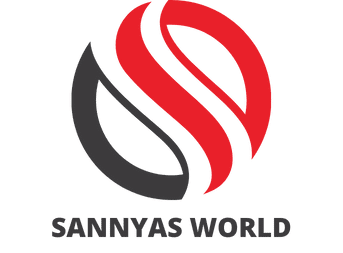Can Progressive Muscle Relaxation Techniques Reduce Tension Headaches in Office Workers?

Work-related stress and tension, especially in office settings, are common sources of various health problems. One of the most frequent complaints is tension headaches, which often stems from chronic muscle tension. In response to this, progressive muscle relaxation (PMR), a therapeutic technique designed to help decrease muscle tension and promote relaxation, has been gaining recognition. However, one question remains: can progressive muscle relaxation techniques reduce tension headaches in office workers?
The Impact of Stress and Anxiety on Health and Well-being
Work-related stress and anxiety have a significant impact on the health and well-being of office workers. The demands of the modern work environment, coupled with the sedentary nature of office work, can lead to a host of physical and mental health problems.
Also to read : What Techniques Can Optimize Recovery from ACL Reconstruction in Amateur Athletes?
One of the most widely reported problems is muscle tension, especially in the neck, shoulders, and back. This tension can lead to chronic pain, decreased productivity, and a reduced quality of life. More specifically, tension can result in frequent headaches, known as tension headaches, which are among the most common neurological disorders.
Studies have shown that chronic exposure to stress can disrupt the body’s natural balance, leading to various health problems such as high blood pressure, heart disease, obesity, and diabetes. Additionally, it can also trigger mental health problems like depression and anxiety disorders.
In the same genre : How to Safely Implement Fasting Protocols for Health Benefits without Risking Malnutrition?
Therefore, finding effective strategies to manage work-related stress and promote relaxation is vital for maintaining optimal health and productivity among office workers.
Understanding Tension Headaches
Tension headaches, often described as a tight band around the head or a weight on the shoulders, are a common affliction among office workers. They are generally caused by muscle contractions in the head and neck region and can be triggered by various factors including stress, anxiety, poor posture, and eye strain from prolonged computer use.
In the majority of cases, these headaches are episodic, occurring less than 15 days a month for at least three months. However, for some people, tension headaches can become chronic, occurring more often and significantly affecting their quality of life.
While over-the-counter medications can help relieve the pain of tension headaches, they do not address the root cause of the problem, which is typically related to stress and tension. Consequently, there is a growing interest in alternative therapies and relaxation techniques that can help manage the triggers of tension headaches.
The Role of Progressive Muscle Relaxation (PMR)
Progressive muscle relaxation (PMR) is a relaxation technique that involves tensing and then releasing different muscle groups to promote physical relaxation and mental calmness. The technique was developed by American physician Edmund Jacobson in the early 20th century.
PMR works on the principle that it’s difficult to be anxious and relaxed at the same time. By teaching individuals to recognize the difference between tension and relaxation in their bodies, it can help them counteract the physical symptoms of stress and anxiety.
In a typical PMR session, you’ll start by finding a comfortable place where you won’t be disturbed. You’ll then work through a specific sequence of muscle groups, tensing each one for about five seconds and then slowly releasing the tension over 15 to 20 seconds. Over time, this practice can help reduce muscle tension and promote a state of relaxation.
Applying PMR to Reduce Tension Headaches in Office Workers
PMR has the potential to be an effective tool for reducing tension headaches in office workers by addressing the root cause: stress and muscle tension. The technique can be easily integrated into the daily routine without requiring a significant time commitment, making it an ideal solution for busy office workers.
Several studies have shown the potential of PMR in reducing headaches. For example, a study published in the Journal of Behavior Therapy and Experimental Psychiatry found that participants who practiced PMR experienced fewer tension headaches and reported lower levels of anxiety and depression.
Implementing PMR in the workplace could take various forms. Office workers could be encouraged to take short breaks throughout the day to practice the technique. Alternatively, employers could offer regular PMR sessions as part of a comprehensive wellness program.
It’s important to note that while PMR can help manage tension headaches, it is not a cure-all solution. It should be used in combination with other healthy lifestyle habits, such as regular exercise, a balanced diet, and adequate sleep, to promote overall health and well-being.
In conclusion, while more research is needed to fully understand the impact of PMR on tension headaches, the existing evidence suggests that it can be a valuable tool for managing this common issue among office workers. As the understanding and adoption of holistic health approaches continue to grow, techniques like PMR will likely play an increasingly important role in promoting health and wellness in the workplace.
PMR As a Complementary Approach to Traditional Therapies
Progressive muscle relaxation (PMR) should not replace conventional treatments for tension headaches and work-related stress but rather serve as an effective complement to these therapies. PMR is a non-invasive and non-pharmaceutical approach that has been found to have no associated adverse effects. This makes it an appealing, accessible and cost-effective method for office workers to incorporate into their daily routines.
PMR has been supported by a significant number of studies. For instance, a systematic review of randomized controlled trials published on Google Scholar found a significant reduction in the frequency and intensity of tension headaches among participants who practiced PMR. Moreover, these participants also reported lower levels of stress, anxiety, and depression.
The benefits of PMR extend beyond relieving headaches and reducing stress. Long-term practice of this relaxation technique can improve sleep quality, lower blood pressure, and improve overall mental health. This can lead to improved productivity and a higher quality of life for office workers.
In addition to tension headaches, PMR has also been found to be beneficial in managing chronic pain and the associated stress and anxiety. This is particularly relevant for office workers who may experience chronic back pain due to prolonged sitting and poor posture.
PMR can also be combined with other complementary therapies for an even more holistic approach. Techniques such as guided imagery, or the use of mental visualizations to induce a relaxation response, can work hand in hand with PMR to further enhance its stress-reducing effects.
Conclusion: Towards a Healthier Work Environment
In conclusion, Progressive Muscle Relaxation (PMR) has shown promising potential in reducing tension headaches and overall stress among office workers. It offers a practical, accessible, and cost-effective way for employees to manage their stress levels and improve their health.
While further studies are required to quantify the effects of PMR on a larger scale, current research indicates that it can be a valuable component of a holistic approach to workplace wellness. It can be incorporated into a comprehensive wellness program that includes other elements like regular exercise, a balanced diet, and mental health supports.
PMR also reinforces the importance of a proactive approach to health in the workplace. By addressing the root causes of common health issues like tension headaches, such approaches can help create a healthier, more productive work environment.
Furthermore, empowering employees with tools to manage their stress levels can lead to improved job satisfaction and morale, and ultimately, a better quality of life. As the business world evolves, employers who take steps to support their employees’ well-being are likely to see improved productivity and reduced absenteeism, leading to a healthier bottom line.
As the adoption of techniques like PMR continues to grow, we anticipate seeing a positive shift in the overall health and wellness of office workers. This will not only lead to a decrease in tension headaches and chronic pain but also to an increase in overall employee satisfaction and productivity.
